Opinion & Analysis
Analyzing the logos of the six most recognizable golf brands
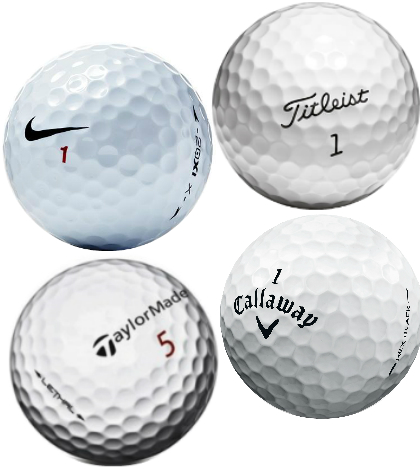
If a picture can be worth a thousand words, a logo can be worth a fair bit more. Like millions. Or billions.
The total golf economy of 2011 was responsible for nearly $70 billion in spending. As such, every OEM wants a share of this monetary pie and the way the consumer perceives an OEM has as much to do where the dollars are spent as anything.
With that in mind, let’s take a look at the stories behind and the images of a select few of the most recognized golf brands in the world.
Titleist
It would be a mistake to refer to the iconic logo as a font. Simply, it is a custom script and can’t be found as an option in any Word document. Thus, the mantra of “often imitated but never duplicated” might apply.
As a logo, the script is simple, clean and classic. There is a timeless element, which is no doubt a function of the fact that the logo hasn’t changed since its inception. The name Titleist is derived from moniker title holder or one who owns the title — the champion. Titleist has been a ball-first company since Phillip W. Skipper Young, an MIT grad, took X-rays of his ball and found the internal elements to be a bit off center. The result is the most dominant ball company in the world. It also makes a pretty decent line of woods, irons, hybrids and putters. You know what they say about something that ain’t broke.
My take: For many, Titleist IS golf. Like the logo, the resulting product is clean and classic. The target consumer for Titleist is one who isn’t necessarily looking for the loudest or boldest product, but a product that is going to perform and won’t ever run the risk of being labeled “gimmick” or flashy. The primary risk in this model is losing a consumer who is attracted to something a bit more caffeinated, but those who are always looking for the “next best thing” probably aren’t attracted to Titleist in the first place.
However, with such a large lead in the ball portion of the industry (nearly 50 percent marketshare), minor refinements and adjustments to the rest of the line are all the company needs at this point. The profits from this area allows the company to hold true to the manner in which it would like to develop and market the club portion of the company. The loyalty (and thus revenue stream) has been firmly established with the ball, and while other OEMs try to put a dent in Titleist’s market share, it’s like trying to drink the Atlantic through one of those twisty straws.
TaylorMade
The name conjures up images of a fine suit made to the exact specifications of the awaiting customer. However, this iteration is the largest golf OEM today, buoyed by a dominance in the metalwoods portion of the industry to the tune of nearly 35 percent. This company has profit like the desert has sand.
In 1983, TaylorMade introduced the first Burner series driver and the logo used was a red circle with a martini glass shaped “T” in the middle. Four years later, TaylorMade added irons to the product offerings and changed to a script logo. The current logo, a white “T” against a black background is cut in the shape of a driver. The simple contrast breeds an even simpler message. It’s all about the driver. Yes, yes it is.
In 2003, TaylorMade introduced the now-legendary R510 TP driver and accompanying TP crest to denote clubs more suited to the low-handicap player. TaylorMade went away from this visual designation after the R9 TP irons, although it has continued to offer a TP line of premium shafts. There are rumors, however, that the TP crest might make a revival moving forward and with it opportunities for the public consumer to play more of the equipment TaylorMade’s Staff Players actually use. Either way, the move will be calculated and likely quite profitable. If this does happen, expect TaylorMade to go full throttle and expect the public to show up with open wallets.
My take: TaylorMade knows exactly what it is doing and it is laughing all the way to the bank, because no one plays on the emotional vulnerability of the consumer golfer better than TaylorMade. The vast majority of humanity is never going break par, hit a smooth 7 iron 185 yards or putt like Tiger. But, it’s quite likely we will bomb a drive or two, hit the occasional sprinkler head and end up 300 yards down the fairway. Distance is intoxicating and TaylorMade is dedicated to reminding us of this time after time and dollar after dollar.
In an industry where the last decade has seen very few true “game-changing” innovations, TaylorMade continues to out-market and out-sell pretty much everyone else. What you think is true is far more important to TaylorMade than what is actually happening. It’s comfortable with its identity and its ability to market and shape the behavior of the willing consumer is unparalleled in the industry. When you’re on top, you’re going to take an inordinate amount of criticism. The upside is, well, everyone is still looking up at you.
Callaway
In 1988, Callaway Hickory Stick USA became Callaway Golf Company and the “Old English Callaway logo” introduced golfers to the Callaway golf brand and core S2H2 technology. The script is reminiscent of all things old, English, St. Andrews, sheep, pastures and the feathery. In 2002, the company added the chevron as an accent marker and has used this modified logo since. The chevron itself dates back to the Middle Ages, and as a French term generally refers to supporting beams (rafters) of a structure. The symbolic element is one of protection and part of the reason this image is often used on military uniforms.
My take: Appealing to the history of the game is an effective and cheap way to purchase authenticity. People like playing golf clubs made by real golf companies and what’s more real than a golf company with a logo that looks like it’s been around since Old Tom Morris was yelling at Young Tom Morris to get his chores done?
In the 1990s, Callaway struggled to create a mass presence as the logo, image and associated players (Johnny Miller, Jim Colbert) didn’t exactly enthuse the general consumer. Annika Sorenstam was undoubtedly a huge draw for females, but that in and of itself didn’t create mass revenue. The addition of Arnold Palmer to the Callaway staff in 2000 certainly increased credibility, but didn’t score many “youth” points. That said, during the last decade, Callaway has made a concerted effort to maintain top-shelf staff (Ernie Els, Phil Mickelson, Jim Furyk) while attracting new/younger talent (James Hahn, Morgan Pressel, Luke List, Patrick Reed). In the last 15 years, Callaway seems to have positioned itself quite nicely, and given its recent legal tiffs with TaylorMade, Callaway is poised to fight for every inch…or yard as the case may be.
Adams
From 1991 until the summer of 2013, Barney Adams and Adams Golf leveraged the momentum created by the original Tight Lies fairway woods into a full-fledged golf equipment company. The logo during this time was fairly non-descript and featured a red triangle followed by the name of the company. The logo itself was quite underwhelming and didn’t really promote anything in particular relative to the company.
However, in 2012, Adams was acquired by TaylorMade and then just a couple months ago the logo changed as well. This time to a script-type font, somewhat similar to that of Titleist.
My take: I’m not exactly sure what Adams is trying to achieve with the new logo, but as an image, I like it. There is certainly more personality to the logo and with it and more emotion than the mechanical triangle and text which it replaced. Given TaylorMade’s recent acquisition and the ensuing questions as to what would happen with Adams, I find the move curious.
Generally, a new logo is accompanied by an effort to rebrand or at least modify how the brand is perceived. So, the question is, “What is Adams going for?” If Adams is going to remain an entity unto itself, how will this logo help it achieve this identity? Some might see the new script as classy and simple; a nice ying to TaylorMade’s edgy yang. Others might see it as a cheap version of the Titleist script and still others might think it looks more like a baseball team than golf company.
Right now there are just too many variables to know exactly where Adams is headed, but wherever they are going, the new logo is clearly part of the plan.
Nike Golf
Nike might not have the storied golf history of a Ping, Titleist or Wilson. But it does have one of the most recognized and studied logos in the history of western civilization. The company was started by Bill Bowerman and Phil Knight in the 1960s, but Nike didn’t enter the golf arena until 1998. Interestingly enough, Nike had already committed $40 million to Tiger Woods in 1995, although it had no balls or clubs of its own. That soon would change.
The story of the swoosh, Nike’s iconic logo, is a bit more interesting. In 1975, Carolyn Davidson (then a student at Portland State) was paid $2 per hour to design a logo for Nike. Seventeen and a half hours and $35 later, the swoosh was born. Originally, Phil Knight wasn’t totally sold on the logo, but thought it might grow on him. Good call!
Eventually, Carolyn was given 500 shares of Nike stock for her efforts. So I guess you can look at it one of two ways: $30,000 is a lot of cash for less than 20 hours of work, or Phil Knight got the best deal since the U.S. Government purchased the Louisiana Territory.
My take: Nike’s success prior to entering the golf market is both a bastion and hinderance. The vast amounts of capital Nike accrues allowed it to sign the most marketable figures in golf: Tiger in 1995 and Rory just last year. It also allows Nike to sign golfers to a complete deal: bag, clubs, balls, hat, glove, clubs, etc. If a player is Nike, he or she is all Nike. This is great for the players and club pros who rep the company.
The challenge is winning over the general consumer and the hurdle for some is to see Nike as a legitimate golf company. Given the level and quality of product available from other OEMs, why would someone choose to play Nike over company __________? That’s the question.
Ping
Onomatopoeia. Kind of what you’d expect from an OEM rooted in engineering. It is what it says it is. Furthermore, what’s more simple than the sound of John Solheim’s quest to create a better putter? Ping. That’s it. The moment of impact. Pure and simple. A bit metallic and it resonates.
Ping’s personification as “PING Man” seems to be equal parts man, Gumby and penguin. Whatever it is, John Solheim created it by bending wires and ultimately liked what he came up with. The unique design is reminiscent of a time when logos were not computer generated and the result of thousands of dollars of market analysis and advertising firms. Nothing is contrived and every design feature is purposeful. Both the PING script and PING Man are unmistakable and like their products, I don’t see Ping changing either unless there is a bona fide reason to do so.
My take: Ping is as authentic an OEM as we have in the major marketplace today. Profit is still the final analysis for any enterprise, but there are a variety of ways to get there. Ping gets there by staying true to its time-tested model. Engineer the living daylights out of a product and make sure it works. When it does, people will buy it. What you see is what you get. Form follows function for Ping, and the results are hard to deny.
From the Anser putter and perimeter-weighted irons to custom-fit everything, Ping has authored several of the most lasting and copied designs of the last several decades. That said, the cost for function-first designs is often lackluster aesthetics and critics of Ping are quick to note that until recently, many irons (see Eye 2) weren’t going to win any beauty contests. For my money, the the S55, Ping Gorge wedges and Anser Forged irons are a far cry from the Ping shovels of the 1990s.
It seems like everyone has a kid on the honor roll and the bumper sticker to prove it. Our culture, for better or worse, exhibits a heavy reliance on exposure and given the varied social media, 24/7 news coverage and 756 TV channels, we know the flavors of OEMs like Baskin Robbins.
Marquee players become synonymous with an OEM. Tiger = Nike, Hunter and Bubba: = Ping. Phil: = Callaway and the list goes on. At the end of the day, consumers purchases more than the product itself. They purchase a piece of the identity of the OEM. Why else do Titleist hats sell so well?
- LIKE5
- LEGIT10
- WOW2
- LOL1
- IDHT1
- FLOP3
- OB1
- SHANK3
19th Hole
Vincenzi: The 8 best prop bets for the 2024 Masters
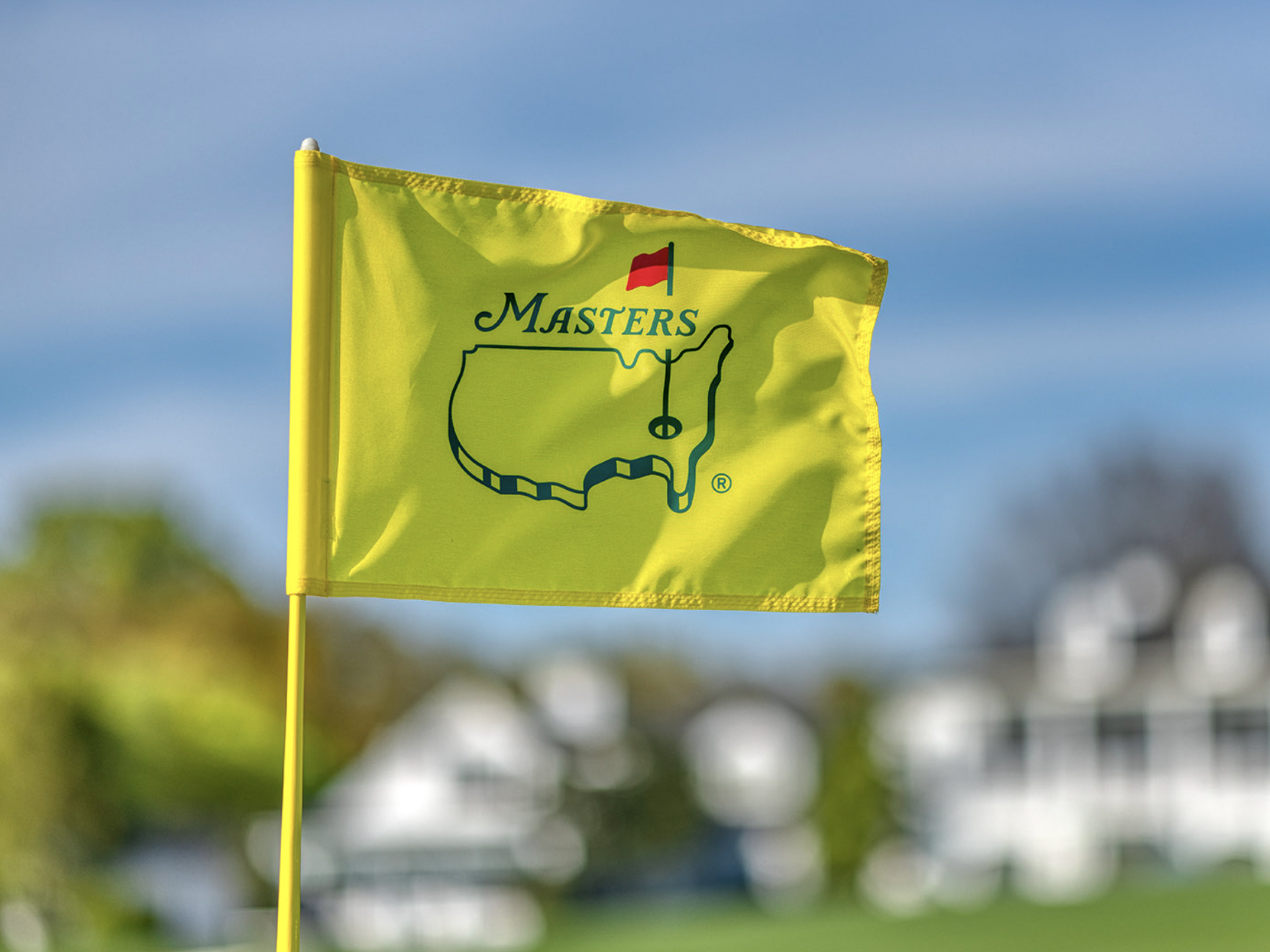
We’ve finally reached The Masters and excitement is at an all-time high. The world of golf has been fractured for the better part of two years, but for a week at Augusta National, all of the outside noise will disappear. All of the best players in the world will be together seeking to make history.
In addition to betting on The Masters champion. This is one of the few weeks of the year where there are so many more markets to explore, with value to be had in plenty of different categories.
Throughout this article, I’ll discuss all of my favorite props and players for the 2024 Masters.
Placement Bets:
Tony Finau Top 5 +750 (DraftKings):
I badly wanted to include Tony Finau in my outright betting selections, but I simply ran out of room on my card. Additionally, it’s slightly difficult to see him hitting the putts necessary to win the Masters on back nine on Sunday. However, I do strongly believe he will play great golf this week at Augusta National.
In his past 24 rounds, Finau ranks 4th in Strokes Gained: Approach is always amongst the best drivers of the golf ball in the game. Back in 2019, Finau had a great chance to win The Masters. I expect him to be hanging around over the weekend once again in 2024.
Gary Woodland Top 20 +550 (DraftKings), Gary Woodland to make the cut -110 (DraftKings):
Last season, Gary Woodland had his best ever finish at The Masters in his eleven tries. The 39-year-old finished T14 and played incredibly steady across all four rounds.
In Woodland’s most recent start at the Texas Children’s Houston Open, he struck the ball incredibly well. He led the field in Strokes Gained: Approach (+8.8) and Strokes Gained: Ball Striking (+10.0).
Gary has been working with Butch Harmon and absolutely flushing the ball both in tournaments and during practice.
Woodland appears to be healthy once again and in a great place physically and mentally. If he can build off his impressive performance at Augusta last year, he can place inside the top ten in 2024.
Additionally, the make the cut number on Woodland seems generous considering the number of players who miss the cut will be relatively small this week. Woodland is striking it well enough to make the cut even if he’s hindered by a balky putter once again.
Thorbjorn Olesen Top 20 +400 (FanDuel):
The Thunder Bear, Thorbjorn Olesen, made his Masters debut in 2013 and finished an incredibly impressive T6 for the week. In the two additional starts he’s made at Augusta National since then, the Dane has continued to be incredibly solid, finishing T44 and T21.
This week, Olesen heads into the week playing some good golf. He gained 3.8 strokes on approach and 5.52 strokes around the green at last week’s Valero Texas Open on his way to a strong T14 finish. Back in January, he won the Ras Al Khaimah Championship on the DP World Tour.
Olesen has the skill set to be successful at Augusta and seems primed for a good performance this week.
Top Nationalities:
Sergio Garcia Top Spanish Player +280 (DraftKings):
I believe Sergio Garcia can get into contention this week with the way he’s striking the ball in addition to his good vibes with a refurbished version of the Scotty Cameron that he used at the 1999 PGA Championship at Medinah.
I am slightly concerned about the emotional letdown he may face after losing in a playoff at LIV Miami, but I believe a veteran and former Masters champion should be able to regroup and focus on an event far more meaningful.
This is essentially a tournament head-to-head with Jon Rahm at +280. While Rahm deserves to be respected this week, the history of the lack of success of defending champions at The Masters is difficult to ignore.
Joaquin Niemann Top South American Player -230 (FanDuel):
While I hate paying this much juice, I don’t see a world in which Joaquin Niemann isn’t the top South American this week at The Masters. Joaco comes in playing better golf than anyone in the world not named Scottie Scheffler and has a serious chance to win the green jacket.
He only needs to beat two players: Emiliano Grillo and Camilo Villegas.
Tournament Head-to-Heads:
Justin Thomas -110 over Collin Morikawa
JT isn’t having his best season but is playing a lot better than he is getting credit for at the moment. In the past three months, there are only six players on the PGA Tour who have averaged 1.7 Strokes Gained: Tee to Green or better. Justin Thomas (+1.7) is one of the six and is currently tied with Rory McIlroy (+1.7).
Morikawa, on the other hand, has been extremely poor with his irons, which is incredibly uncharacteristic for him. I can’t help but feel like something is completely off with the two-time major champion.
Tony Finau -110 over Wyndham Clark
I explained in the placement section why I’m so high on Tony Finau this week. With how well he’s striking the ball, it seems as if his floor is extremely high. I’m not sure if he can make the putts to win a green jacket but I believe he will be in the mix similarly to 2019 when Tiger Woods emerged from a crowded pack of contenders.
Clark is a debutant, and while some debutants have had success at The Masters, it certainly poses a challenge. I also don’t believe Augusta National suits Clark as well as some of the other major championship venues.
- LIKE3
- LEGIT2
- WOW1
- LOL0
- IDHT0
- FLOP0
- OB0
- SHANK1
19th Hole
Vincenzi’s 2024 Masters betting preview: Niemann to play star role at Augusta National
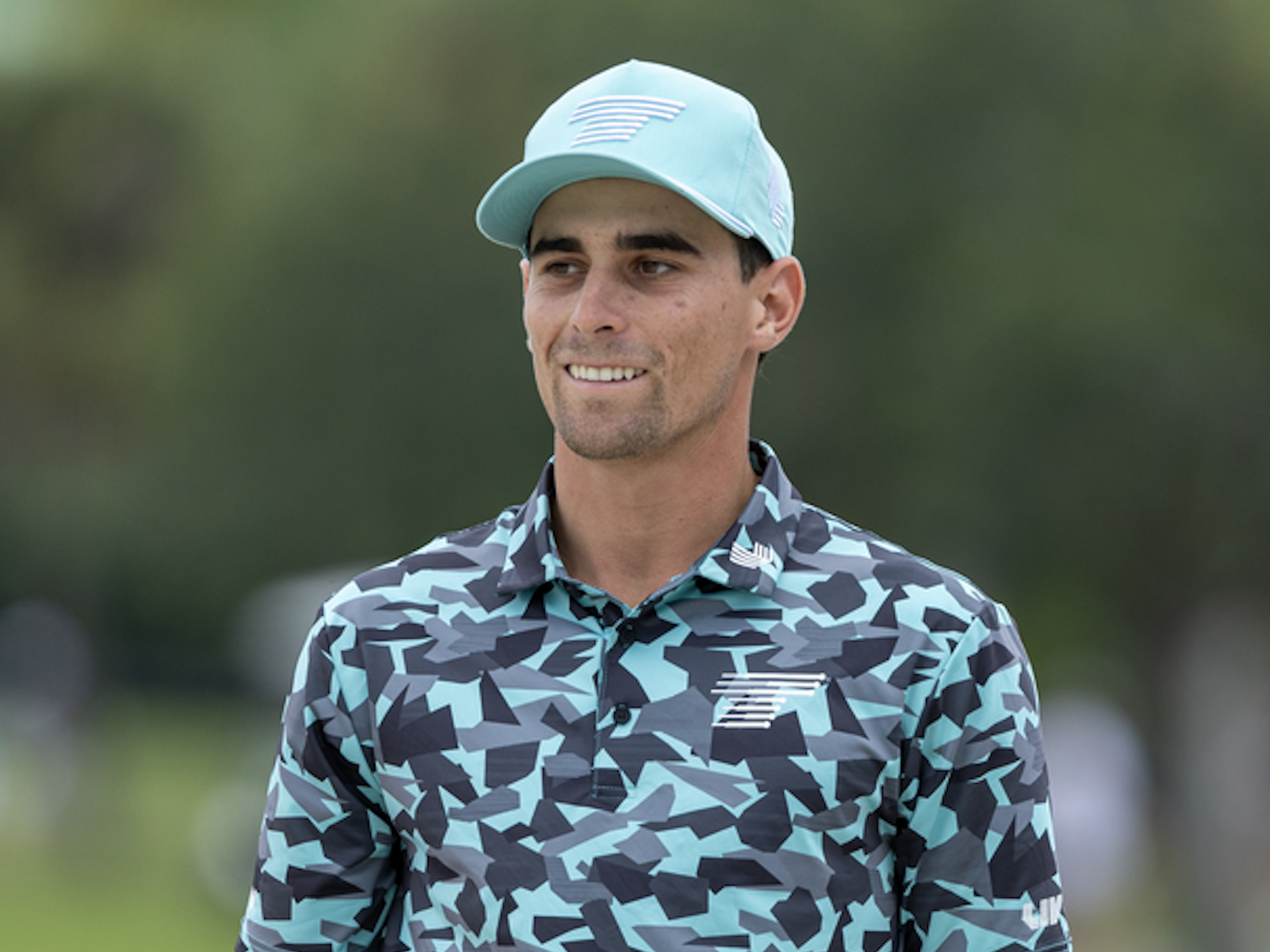
It’s been over nine months since we saw Brian Harman parlay a dominant performance at Royal Liverpool into a claret jug. After another major offseason filled with a feud between the PGA Tour and LIV Golf, talks of a merger, and a multitude of questions regarding the future of the game, the golf world is desperate for all of the best players in the world to come together again for a major championship.
We return to Augusta National with excitement at a fever pitch. Scottie Scheffler has separated himself as the best player in the world heading into the Masters. At the moment, the 27-year-old seems to be an unstoppable force. However, questions about Scheffler’s up-and-down putter once again resurfaced as he missed multiple short putts at the Texas Children’s Houston Open including a 5’11” putt to force a playoff with Stephan Jaeger.
Additionally, a handful of the PGA Tour’s top players such as Justin Thomas, Rory McIlroy, Will Zalatoris, Patrick Cantlay, Tommy Fleetwood and Jordan Spieth make their way to Augusta National with their current form in question.
Plenty of LIV golfers may be up to the task of conquering Augusta, but with so much time in between the last two majors, it’s not always easy to decipher how their games will stack up against Scheffler and co.
Last year, some important changes were made at Augusta National. The par-5 13th (Azalea) was lengthened by 35 yards and now measures 545 yards. Last year, Azalea played as the toughest of the four par 5s, and players averaged 4.74 for the week, which was down from 4.85 in 2022. However, eagles, birdies and bogeys were all up, so the lengthening achieved less pars, which equals more excitement.
Without further ado, let’s get into the course breakdown and analyze some important statistics for Augusta National.
Augusta National is now a 7,510-yard par-72 with lightning-fast Bentgrass greens. The course’s primary defenses are the contoured greens, swirling crosswinds, the topography of the course, which creates uneven lies and the small landing areas that golfers will need to hit to avoid tight run-off areas around the greens.
Past Winners at the Masters
- 2023: Jon Rahm (-12)
- 2022: Scottie Scheffler (-10)
- 2021: Hideki Matsuyama (-10)
- 2020: Dustin Johnson (-20)
- 2019: Tiger Woods (-13)
- 2018: Patrick Reed (-15)
- 2017: Sergio Garcia (-9)
- 2016: Danny Willett (-5)
- 2015: Jordan Spieth (-18)
- 2014: Bubba Watson (-8)
- 2013: Adam Scott (-9)
- 2012: Bubba Watson (-10)
- 2011: Charl Schwartzel (-14)
- 2010: Phil Mickelson (-16)
In this article and going forward, I’ll be using the Rabbit Hole by Betsperts Golf data engine to develop my custom model. If you want to build your own model or check out all of the detailed stats, you can sign up using promo code: MATTVIN for 25% off any subscription package (yearly is best value).
Key Stats For Augusta National
Let’s take a look at the six most important metrics at Augusta National and determine which golfers boast top marks in each category over their last 24 rounds. This should give us a good starting point for building out a betting card.
Strokes Gained: Approach
Approach is historically the most important statistic at Augusta National. The sloping, speedy greens and run-off areas create small landing spots that can be difficult to hit.
Last year, Jon Rahm ranked 6th in the field in Strokes Gained: Approach. Overall, five of the past seven winners at Augusta have ranked in the top 6 in the category. Distance helps, but Augusta National is a second-shot golf course.
Total Strokes Gained: Approach in past 24 rounds:
- Scottie Scheffler (+1.30)
- Corey Conners (+0.99)
- Shane Lowry (+0.88)
- Tony Finau (+0.85)
- Austin Eckroat (+0.85)
Course History
More so than any other course on TOUR, familiarity with Augusta National is crucial. Only one player has ever won the Masters on their first try — Fuzzy Zoeller in 1979. Meanwhile, there are 17 golfers in history who have multiple green jackets.
In most cases, the Masters champion has shown some good form at Augusta in the past. Prior to Scottie Scheffler’s 2022 victory, he finished T19 and T18 in his first two trips to the course. Prior to 2023, Rahm had finished in the top-10 of four of his six starts at The Masters.
Total Strokes Gained: Total at Augusta National in past 36 rounds (per round, minimum eight rounds):
- Will Zalatoris (+2.91)
- Jon Rahm (+2.28)
- Jordan Spieth (+2.22)
- Scottie Scheffler (+2.22)
- Dustin Johnson (+2.01)
- Rory McIlroy (+2.00)
- Hideki Matsuyama (+1.90)
- Justin Rose (+1.85)
- Rickie Fowler (+1.72)
- Russell Henley (+1.60)
Par 4 Scoring Average
Since plenty of players can reach the par 5s at Augusta in two, par-4 scoring becomes more important. The golfer who separates themselves on the par 4s will be able to gain ground on the field.
Par 4 Scoring Average in past 24 rounds:
- Scottie Scheffler (+3.88)
- Chris Kirk (+3.92)
- Jordan Spieth (+3.93)
- Peter Malnati (+3.93)
- Xander Schauffele (+3.93)
Strokes Gained: Around the Green
Golfers with a solid short game tend to fare well at Augusta National. The run-off areas are treacherous, and players will often be scrambling to get up and down.
The majority of players who have won at Augusta National have a great short game and have shown consistent ability to get up and down from tough spots.
Total Strokes Gained: Around the Green in past 24 rounds:
- Hideki Matsuyama (+0.71)
- Scottie Scheffler (+0.66)
- Patrick Reed (+0.61)
- Xander Schauffele (+0.53)
- Lucas Glover (+0.51)
Strokes Gained: Off the Tee
Augusta National is most definitely a second shot golf course. Golfers can get away with a missed fairway here and there, however, it’s important that the misses with driver aren’t too wide of the target or there is serious trouble to be had.
Total Strokes Gained: Off the Tee in past 24 rounds:
- Bryson DeChambeau (+1.04)
- Rory McIlroy (+0.85)
- Scottie Scheffler (+0.84)
- Xander Schauffele (+0.71)
- Ludvig Aberg (+0.68)
Strokes Gained Putting: Fast Bentgrass
The USGA calculates that, on average, the greens at Augusta National are the fastest greens in the country. Three-putting is fairly common at Augusta and golfers must be able to combat the speed of the greens with effective lag putting.
Total Strokes Gained: Putting on Fast Bentgrass in past 24 rounds:
- Justin Rose (+1.43)
- Sahith Theegala (+0.97)
- Min Woo Lee (+0.88)
- Cameron Smith (+0.70)
- Patrick Reed (+0.70)
Statistical Model
Below, I’ve reported overall model rankings using a combination of the six key statistical categories previously discussed.
These rankings are comprised of SG: App (25%); Course History (16%); Par 4 Scoring Average (10%); SG: Putting on Fast Bentgrass (16%); SG: OTT (16%). and SG: ARG (16%).
Last year, Jon Rahm ranked first in this model
- Scottie Scheffler
- Xander Schauffele
- Hideki Matsuyama
- Tony Finau
- Justin Thomas
- Shane Lowry
- Will Zalatoris
- Corey Conners
- Si Woo Kim
- Rory McIlroy
- Stephan Jaeger
- Jordan Spieth
- Chris Kirk
- Keegan Bradley
- Wyndham Clark
- Sahith Theegala
- Russell Henley
- Collin Morikawa
- Matt Fitzpatrick
- Patrick Reed
My 2023 Pick:
Jon Rahm (+950) (FanDuel)
A few months ago, I never thought that I’d be able to say that Rahm would be going slightly under the radar heading into the 2023 Masters. It’s not that Rahm has done anything wrong, but both Scheffler and McIlroy have undoubtedly surpassed him as the scorching hot, super-elite, top of the market betting favorite category.
Since his win at Riviera, the Spaniard has finished 39th at Bay Hill, withdrew at The Players Championship, and failed to get out of the group stage at the WGC Dell Match Play. On the other hand, Scheffler won The PLAYERS Championship and McIlroy finished third at the WGC Dell Match Play.
Rahm has made six starts at The Masters and has come in the top-10 in four of them. The 28-year-old has incredible power off the tee, a requirement at Augusta which always plays longer than the scorecard indicates. He’s also incredible around the greens and ranks third in the field in Strokes Gained: Short Game, which is a combination of around the green play and putting, in his past 24 rounds.
As we’ve seen over the years at The Masters, having the ability to chip and putt your way out of difficult situations is a fundamental aspect of getting it done at Augusta National.
While Scheffler has made a strong case to be viewed as the world’s best player, I still believe that title belongs to Rahm. This will be the year Rahmbo joins the ranks of Seve Ballesteros, José María Olazábal, and Sergio Garcia as natives of Spain to don a green jacket.
2024 The Masters Picks
Brooks Koepka +2500 (DraftKings)
In order to win the 2024 Masters, a player will have to go toe-to-toe with Scottie Scheffler, who’s hitting the ball as anyone in golf over the last two seasons. When building a betting card this week, it’s important for me to choose players that I believe can stare Scheffler down on the weekend at Augusta National. Brooks Koepka fits that bill.
Koepka’s lackluster performance at LIV Miami is concerning, but he’s the type of player who can turn it on quickly during the week of a major championship. Although I’d have preferred, he played well last week, I’ll take the odds discount we got as a result of his most recent results.
Prior to LIV Miami, Koepka appeared to be in solid form. He finished in the top twelve in four of five starts on LIV this season. When it comes to the five-time major champion, it’s well known that he has another gear for major championships. Everything he’s done both in the off-season and during the LIV season is to gear up for the year’s first major at Augusta National.
In his past five starts at Augusta National, the 33-year-old has three top-7 finishes, including two runners-up. The two years when he played poorly (2019 and 2020) were when he was nowhere near 100% healthy. All signs point to Brooks being in a great place physically as we enter major season.
Last year, Koepka was the 36 and 54-hole leader prior to letting the green jacket slip away to Jon Rahm. He used the result as a springboard to win his 5th major at Oak Hill at the PGA Championship.
Brooks enters the week looking to get one step closer to achieving the career grand slam and golf fans would be foolish to rule him out.
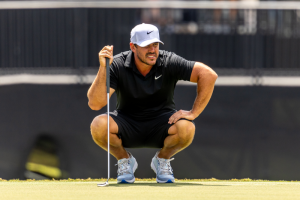
Joaquin Niemann +2800 (BetRivers)
Full disclosure, I bet Niemann the second he was invited to The Masters back in February at +8000. Although the odds have shortened dramatically since then, I can’t pretend that the Chilean isn’t one of the players who has a real chance to win the 2024 Masters.
While I was speaking with Niemann back in March, he told me how much he loves Augusta National.
“Yeah, it’s a place that I love. I’ve been playing good golf. Especially last year, I wasn’t playing my best golf, and I had a good week there and made triple on 11 that kind of killed me a little bit.
I feel like I’m getting more ready and more prepared every time. My game is getting better too. I know that I’m playing good enough to be in that situation that I can have a chance to win the Masters and it’s all about how I react to that situation.
So yeah, I’m going to prepare myself to be ready for that situation if it happens and I can fight for the title on the Sunday which would be awesome.”
As Niemann alluded to, the Chilean was able to have his best career finishes at The Masters (T16) despite not being in the best form. This year, Niemann comes into the week playing better golf than anyone in the world with the exception of Scottie Scheffler. The 25-year-old has won three times since December and has shown the world why he was regarded as one of the games future stars since he was a teenager.
Historically speaking, Joaco’s win at Riviera a few years back seems to be an indicator of potential success at Augusta National. Fourteen players have won at both historic courses including Hideki Matsuyama, Jon Rahm, Phil Mickelson, Dustin Johnson, Nick Faldo, Tom Watson and Ben Hogan.
Niemann has all the shots to be successful at Augusta National. His low stingers will come in handy on plenty of holes down the stretch and he can work it both ways, playing the high draw or the low fade. He also putts best on Bentgrass greens and likes them fast. Whether PGA Tour or LIV, talent will always reign supreme, and I’ll always bet on that talent.
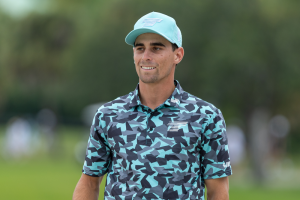
Cameron Smith (+4000) (FanDuel)
Cameron Smith is another player who we should get an odds discount on based off of the results at LIV Miami. Smith was forced to withdraw prior to the second round due to food poisoning. In my opinion, the number has drifted to a place where I’d consider it a “bet the number” play on the talent.
Smith is a contender for the green jacket anytime he tees it up at Augusta National. The Australian absolutely loves the golf course and has four top-10 finishes in his last six trips to the golf course. In both 2020 and 2022, Smith had a real chance of winning The Masters and came up just short, finishing T2 and T3 in those two tries. In his past 36 rounds, he ranks 4th in Strokes Gained: Total per round at Augusta.
In order to be successful at Augusta National, players must be creative around the greens and be shot makers who have plenty of ways to get around the golf course. Cam has all the shots required to be successful at the course at his touch around the greens will continue to serve him well in his hopes for a green jacket.
Smith is arguably the best putter in the world and has the capability to win a golf tournament on and around the greens. He’s already taken down Rory McIlroy at the home of golf on his way to a claret jug and is one of the few players who can stare down any of the world’s top golfers on the back nine at Augusta National.
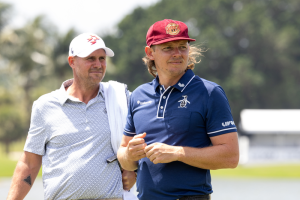
Justin Thomas +4000 (FanDuel)
With how he’s been playing since his 2022 PGA Championship win, you may be shocked to see the name “Justin Thomas” in this preview. However, JT has drifted to a place on the odds board where I believe it’s worth taking a shot on the talent of a two-time major champion in his prime.
It’s not all bad for Thomas this season. He finished T6 at the signature Pebble Beach event, T12 at the Waste Management Phoenix Open and T12 at the signature Arnold Palmer Invitational. In his last 24 rounds, JT ranks 8th in the field in Strokes Gained: Approach, 14th in Strokes Gained: Around the Green and 29th in Strokes Gained: Putting on fast Bentgrass greens.
Despite missing the cut last season, Thomas has played pretty well at Augusta National. He ranks 13th in Strokes Gained: Total in his past 36 rounds at the course. He finished T4 in 2020, T21 in 2021 and T8 in 2022.
I believe the 2024 edition of The Masters is completely wide open. The past few years has been frustrating for Thomas fans, but I believe his peak form may be a bit closer than people realize.
Sergio Garcia +12000 (FanDuel)
Earlier this season, Garcia dueled with Joaquin Niemann before finally losing on the fourth playoff hole late into the night. Despite the loss, the 44-year-old seemed to gain confidence in his game. The results that followed weren’t spectacular, but in terms of his ball striking he’s shown some flashes of vintage Sergio.
At LIV Miami last week, Garcia played well on a massive golf course, losing in a playoff to Dean Burmester. He continued pumped the ball into the fairway and hit massive iron shot after massive iron shot. He also used a refurbished Scotty Cameron that he used in the 1999 PGA Championship at Medinah. The putter served him incredibly well until he missed a short putt on the 18th hole to win the event. Overall, he gained 7.1 strokes putting at Doral.
Sergio Garcia is once again headed to Augusta National with a chip on his shoulder. Of course, having a chip on the shoulder is nothing new for the fiery Spaniard, but this year, the 2017 Masters Champion will arrive at Augusta with his game clicking on all cylinders.
Sergio winning a second green jacket is seemingly an almost impossible feat, but magical things tend to happen on the hallowed grounds of Augusta National.
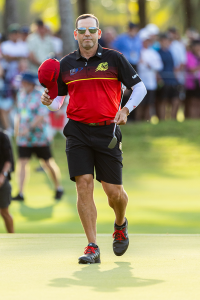
Adam Scott +11000 (FanDuel)
Betting Adam Scott over the past handful of years has been a Masters staple for me, and like many traditions, has been a hard one for me to let go of.
Last week, Scott finished T14 at the Valero Texas Open in a windy and difficult week. I believe the wind will be a major factor this week at Augusta National, and the more difficult the tournament plays, the more I favor Scott. Scott also ranks 5th in his past 24 rounds on Strokes Gained: Putting on Fast Bentgrass and has the short game these days that could help him contend in a major.
Since his win in 2013, Scott’s history at The Masters has been spotty. He has some poor finishes alongside a T9 in 2017 and a T18 in 2019. He’s been playing some solid golf this season, finishing T8 at the Waste Management Phoenix Open and T19 at the Genesis Invitational.
(All photos in piece belong to LIV Golf)
- LIKE26
- LEGIT21
- WOW8
- LOL1
- IDHT0
- FLOP4
- OB0
- SHANK11
Opinion & Analysis
The 22 players who can win the Masters
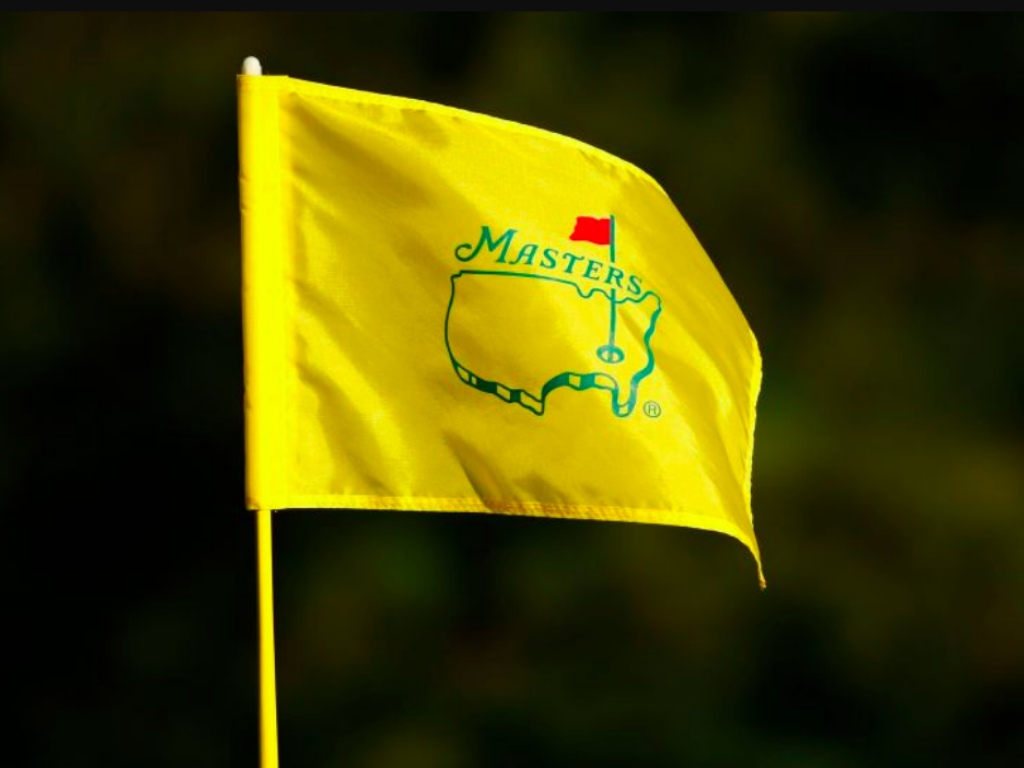
Since 2013, I have created a filtering process to help determine the players who are most likely to win the green jacket based on criteria that have strongly predictive outcomes to success at Augusta. The list of players that can win at Augusta is usually filtered down to 20-24 players and in that time I have correctly shortlisted every Masters champion.
This includes last year’s winner, Jon Rahm. Even though Rahm essentially walked away with the green jack and did not make it very close, there were some close calls on top of the leaderboard as I had filtered out Phil Mickelson (t-2nd) and Patrick Reed (t-4th) as the LIV Tour is still behind on providing advanced analytics for their tour. Russell Henley was also filtered out and finished t-4th, five strokes from Rahm’s winning score of 276.
If you’re watching at home, the “critical holes” that will likely determine the top finishers will be holes No. 7, 8, 11 and 13. The 11th hole is projected to be the most critical of holes as over the past five Masters the top players have gained nearly a 1.5 strokes for the tournament on that hole alone.
Just like last year’s column I will get the LIV Tour players I’ve filtered out of the way. Since LIV Tour does not provide ShotLink or Trackman data, it’s more of a guessing game as to how certain LIV Tour golfers are playing. I did utilize recent performance as well as performance at Mayakoba and Doral as they were two former PGA Tour courses that have some semblance of crossover to playing Augusta.
Phil Mickelson
Thorbjorn Olesen
Charl Schwartzel
Cameron Smith
Bubba Watson
Admittedly Cameron Smith and Phil Mickelson are hard to leave out, but both have not played well as of late.
Next, I filtered out the amateurs and all first-time professional attendees. The Masters has only been won three times by a first-time attendee: Fuzzy Zoeller was the last to win in 1979. Prior to Zoeller though, it was Horton Smith in the inaugural event in 1934 followed by Gene Sarazen in 1935
Ludvig Aberg
Akshay Bhatia
Wyndham Clark
Eric Cole
Santiago de la Fuente (a)
Nick Dunlap
Austin Eckroat
Stewart Hagestad (a)
Ryo Hisatsune
Lee Hodges
Nicolai Hojgaard
Stephan Jaeger
Jake Knapp
Christo Lamprecht (a)
Peter Malnati
Denny McCarthy
Grayson Murray
Matthieu Pavon
Adam Schenk
Neal Shipley (a)
Jasper Stubbs (a)
Out of the first time invitees the data likes Ludvig Aberg and Eric Cole to play the best at Augusta National.
I also filter out old Masters champions that I do not believe can get into contention anymore.
Fred Couples
Jose Maria Olazabal
Vijay Singh
Mike Weir
Tiger Woods
Recency has a strong predictive value for player performance and missing the cut in the event in the prior week greatly reduces the likelihood of winning the following week compared to players that miss the cut, take a week off, and then play the following week. Therefore I filter out all players that missed the cut at the Valero Texas Open last week.
Byeong Hun An
Harris English
Rickie Fowler
Ryan Fox
Zach Johnson
Tom Kim
Erik van Rooyen
Camilo Villegas
I will also filter out the players that have never made the cut at the Masters:
Kurt Kitayama
Adrian Meronk
A Tradition Unlike Any Other…
Augusta National has traditionally favored longer hitters and even moreso in the past 20 years of the event. Of course there has been exceptions as in 2007 the short hitting Zach Johnson ended up winning the event.
Critics of my filtering system point out Johnson’s victory as a case for short hitters being able to win at Augusta, but they neglect the fact that Johnson’s victory came in historically low temperatures in the 40’s with wind gusts reaching 35 mph. That made the par-5’s almost unreachable in two shots and the course stressed wedge play and short game around the green where Zach had a sizable advantage.
It is projected to rain early on Thursday and then the weather is supposed to be sunny and warm for the rest of the week. It depends on how quickly the course dries up, but if it does dry out fairly quickly that will give the longer hitters the advantage as they will be able to reach certain par-5’s in two shots that the shorter hitters cannot reach if they don’t hit a quality tee shot and there may be par-5’s that some of the long hitters can reach in two shots with a short iron. Therefore I will filter out the following players due to a lack of distance off the tee:
Corey Conners
Lucas Glover
Emiliano Grillo
Brian Harman
Si Woo Kim
Chris Kirk
Shane Lowry
Colin Morikawa
JT Poston
Justin Rose
Sepp Straka
Out of these players the data likes Lowry and Morikawa the most. Both have good history at Augusta and they both just narrowly missed the distance benchmark set in the filter and both are excellent long iron players.
Last year I created a new formula to better determine ball height as Augusta has historically not taken too kindly to a low ball flight. Out of the 5 players filtered out for low ball flight using the new formula the best finish was only t-29th by Si Woo Kim. This year I’ve filtered out the following players.
Matthew Fitzpatrick
Sungjae Im
Luke List
Joaquin Niemann
Justin Thomas
Every year I filter out the poor performers on approach shots from 175-225 yards as Augusta National puts a lot of stress on those shots. Last year I filtered out nine players and three of them missed the cut with only Jordan Spieth finishing in the top-15 (t-4th) as the rest of the players were never a threat.
Here are the golfers I’m filtering out due to poor play from 175-225 yards:
Patrick Cantlay
Cameron Davis
Jason Day
Tommy Fleetwood
Russell Henley
Max Homa
Rory McIlroy
Jordan Spieth
Nick Taylor
Rory had a nice outing at the Valero Texas Open and hit his irons better there, but appears to be struggling with a leftward miss. Other than that, Rory still has the game to win his first green jacket. Henley is usually one of the better iron players on Tour, but he has struggled this season from 175-225 yards and is a short hitter anyway.
I will also filter out Danny Willett as he is coming off injury and making his comeback at the Masters.
That leaves the 22 players that can win the Masters:
Keegan Bradley (150/1)
Sam Burns (60/1)
Bryson DeChambeau (25/1)
Tony Finau (50/1)
Sergio Garcia (100/1)
Adam Hadwin (175/1)
Tyrrell Hatton (80/1)
Viktor Hovland (35/1)
Dustin Johnson (40/1)
Brooks Koepka (16/1)
Min Woo Lee (70/1)
Hideki Matsuyama (20/1)
Taylor Moore (300/1)
Jon Rahm (12/1)
Patrick Reed (80/1)
Xander Schauffele (18/1)
Scottie Scheffler (4/1)
Adam Scott (100/1)
Sahith Theegala (50/1)
Gary Woodland (250/1)
Cameron Young (50/1)
Will Zalatoris (35/1)
Here’s my personal top-10 picks:
Keegan Bradley (150/1)
Sam Burns (60/1)
Bryson DeChambeau (35/1)
Tony Finau (50/1)
Viktor Hovland (35/1)
Dustin Johnson (40/1)
Hideki Matsuyama (20/1)
Jon Rahm (12/1)
Xander Schauffele (18/1)
Scottie Scheffler (4/1)
- LIKE133
- LEGIT54
- WOW14
- LOL18
- IDHT3
- FLOP5
- OB3
- SHANK40
-

 19th Hole2 weeks ago
19th Hole2 weeks agoJohn Daly stuns fans into silence with brutal opening tee shot on PGA Tour Champions
-

 19th Hole1 week ago
19th Hole1 week agoThings got heated at the Houston Open between Tony Finau and Alejandro Tosti. Here’s why
-

 19th Hole5 days ago
19th Hole5 days agoReport: Tiger Woods has ‘eliminated sex’ in preparation for the 2024 Masters
-

 19th Hole3 weeks ago
19th Hole3 weeks ago2-time major champ announces shock retirement from the sport at age of 33
-

 19th Hole3 weeks ago
19th Hole3 weeks agoEdoardo Molinari reveals the latest PGA Tour golfer to turn down ‘good offer’ from LIV Golf
-

 19th Hole2 weeks ago
19th Hole2 weeks agoCharlie Woods finds it tough going on American Junior Golf Association debut
-

 19th Hole1 week ago
19th Hole1 week agoAddiction, spinal fusion, and scam artists – Everything Anthony Kim revealed in candid interview with David Feherty
-

 19th Hole4 days ago
19th Hole4 days agoAnthony Kim says doctors told him that he ‘may not have much time left’ ahead of LIV return

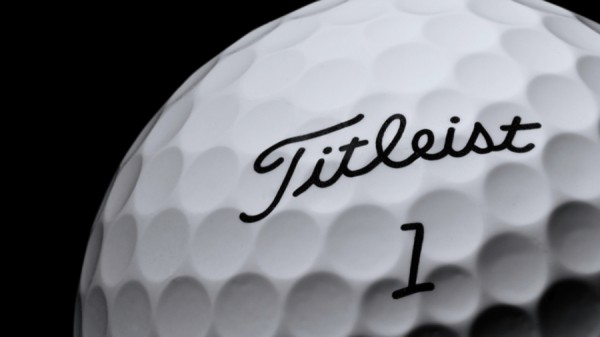
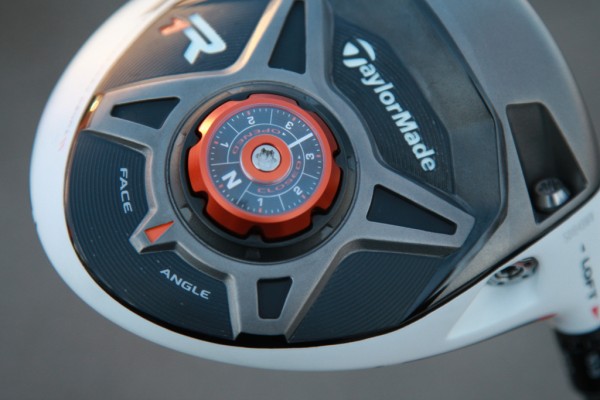
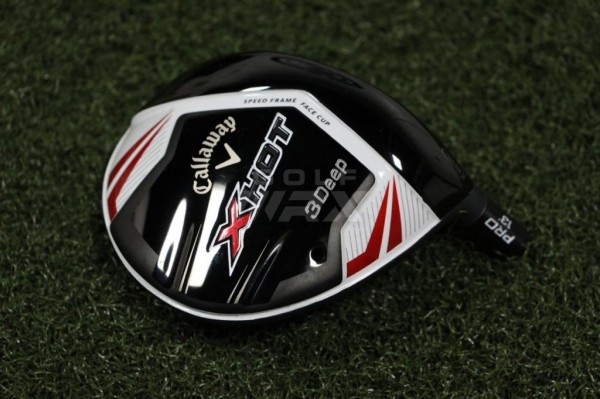
![ADAMS new and old[4]](https://www.golfwrx.com/wp-content/uploads/2013/09/ADAMS-new-and-old41.jpg)
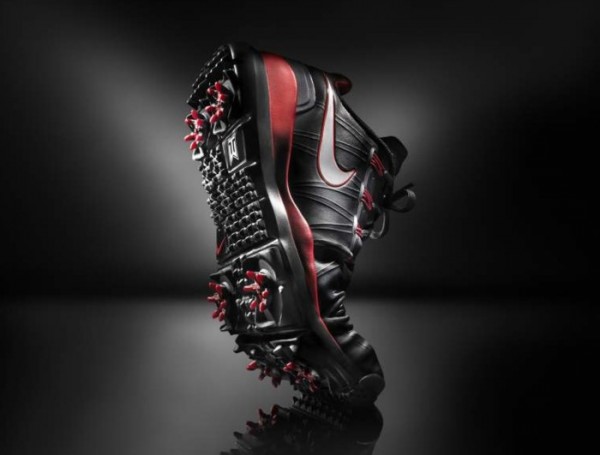
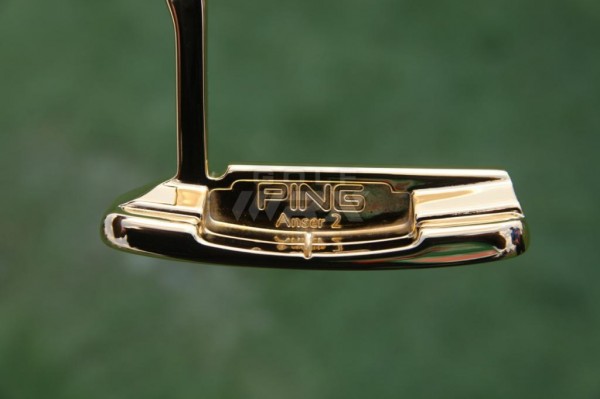




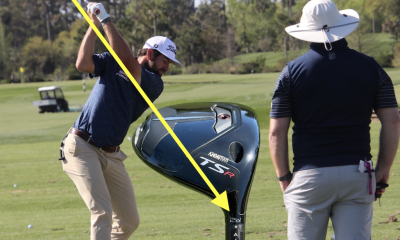

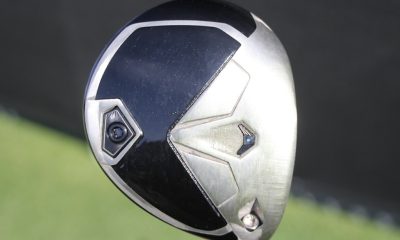

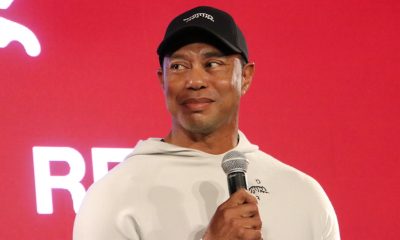

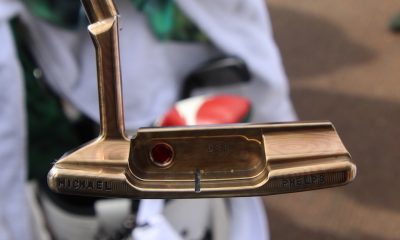

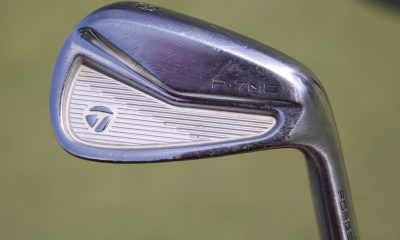









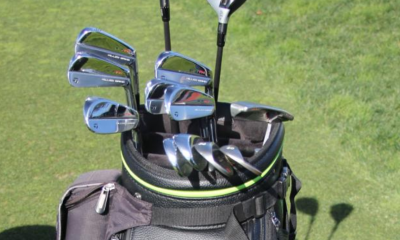

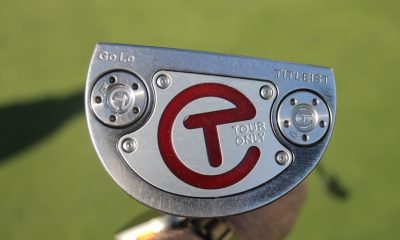



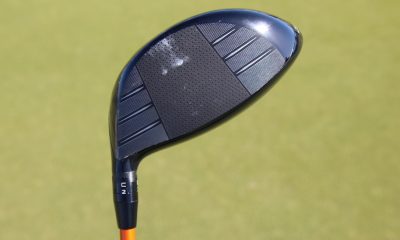

Edward
Oct 17, 2013 at 12:49 pm
Nice change of pace here. Good read.
Stewart
Oct 16, 2013 at 4:51 pm
Nice article.
Don’t see where Nike come into it as far as golf though. Even with Tiger and a few others I just don’t really think of them as a golf company.
Maybe could have included the Scotty Cameron logo.
Rich
Oct 16, 2013 at 4:05 pm
Well,” LOGO”—Titlest is a name not a logo, Taylormade is going back to the shield away from their funky “T”, Adams is also a name, Nike has a Logo the swoosh, Ping rarely uses the little man with a club, Callaway has a Logo the Chevron. But you left out Wilson Staff the oldest of all The W/S shield and the best looking of all time.
Ask who has the best Logo Not A name!
Metrybill
Oct 30, 2013 at 9:52 pm
For ME, a 65 y.o., the bet looking, soft feeling and performing balls ever (great performers in the day), were the 60’s and 70’s Maxfli black and red balls. The current iterations are harsh. Still like the look.
195 Bowler
Oct 15, 2013 at 8:10 pm
Manufacturers take their logos seriously. I took a survey for Bridgestone Golf earlier this year, something about helping to design a new ball. One of the questions was should the ball’s logo change from “Bridgestone” to the Bridgestone “B” found on most of their products (hats, bags, golf ball packaging, etc.). Or, a combination (one side with “Bridgestone” and the other with the “B”). So long as they perform well, it shouldn’t matter . . . or will it?
Mike
Oct 14, 2013 at 9:25 am
Nice article. What about Footjoy (FJ)? Surely also iconic?
Alex
Oct 14, 2013 at 10:33 am
Good point!
The mark of a player as they call it
Jeff
Oct 20, 2013 at 10:00 pm
Footjoy is a Titleist brand, not an OEM in their own right.
Alex
Oct 14, 2013 at 9:09 am
Quite interesting, always wondered what Titleist meant, such a clean classic logo always like to see that on my ball/glove/putter/wedge
Never noticed that the TM logo was a driver head! Should have done I own enough things with it on…
Tad
Oct 14, 2013 at 8:27 am
I realy don’t care for the new adams logo i think the new logo looks like a basball companys logo, but if thats the futer of logos than im sure by next year i will like it.
Ted
Oct 13, 2013 at 9:30 pm
This is a nice article… I like the origin information… thanks for writing.
Desmond
Oct 13, 2013 at 12:33 pm
Reaching for articles, arent’ we?
Chris Nickel
Oct 15, 2013 at 2:22 pm
Not reaching at all…if you have better ideas, we’d love to hear them!
KCCO
Oct 16, 2013 at 7:35 pm
Thoroughly enjoyed!
Fred
Oct 17, 2013 at 8:19 pm
Chris: good response. As we all know, advertising and marketing go hand in hand in the corporate world and, perhaps, even more so where sports is concerned. In a recent article I read, someone asked one of the magazines why the pro bags were so big. Their response: the bigger the bag, the more “logos” that can be put on it. So, a point well made about logos on balls. That said, I’m not so sure I’m all that crazy about the size of the bear on Jack’s new balls. A bit distracting I think.
Jeff
Oct 20, 2013 at 10:05 pm
I loved the article, I have a suggestion for an article I have always wanted to see. I would love to see all the OEMs connected to all their offshoot-subsidiary brands. Like how Auschsnet at a time owned Titleist, Cobra, Footjoy, and Pinnacle, even though I think Cobra was bought by Puma, I would really love to know just who makes certain brands, Strata(Top Flite- Callaway I think) and Maxfli- I don’t know if its Dunlop or Taylormade owns the rights to that brand. Anyway its just an idea. thanks.
Deacon Blues
Oct 11, 2013 at 4:57 pm
In the Ping section, I think you’re referring to the late Karsten Solheim, not his son (and successor) John.
Fred
Oct 17, 2013 at 8:11 pm
Deacon is right. My father and Karsten were very good friends and worked together at GE in Phoenix when Karsten was still creating PING clubs in his garage. In the very early `60s, I recall my father, who was an Industrial Designer, working on some advertising layouts for Karsten’s company on our kitchen table. I recall seeing the PING man even then, at a time when John and I were both in high school. On another note: I credit Karsten for peeking my interest in golf. For my 13th birthday, he gave me a new set of PING 69s and my dad and I a few of the original putters (Scottsdale and Redwoods). According to Bobby Grace, the `69s are worth around $4,000 now.
Biz
Oct 18, 2013 at 4:47 pm
Also, the PING logo type is a result of a the most simple path a round cutter/bit can take on a manual milling machine…